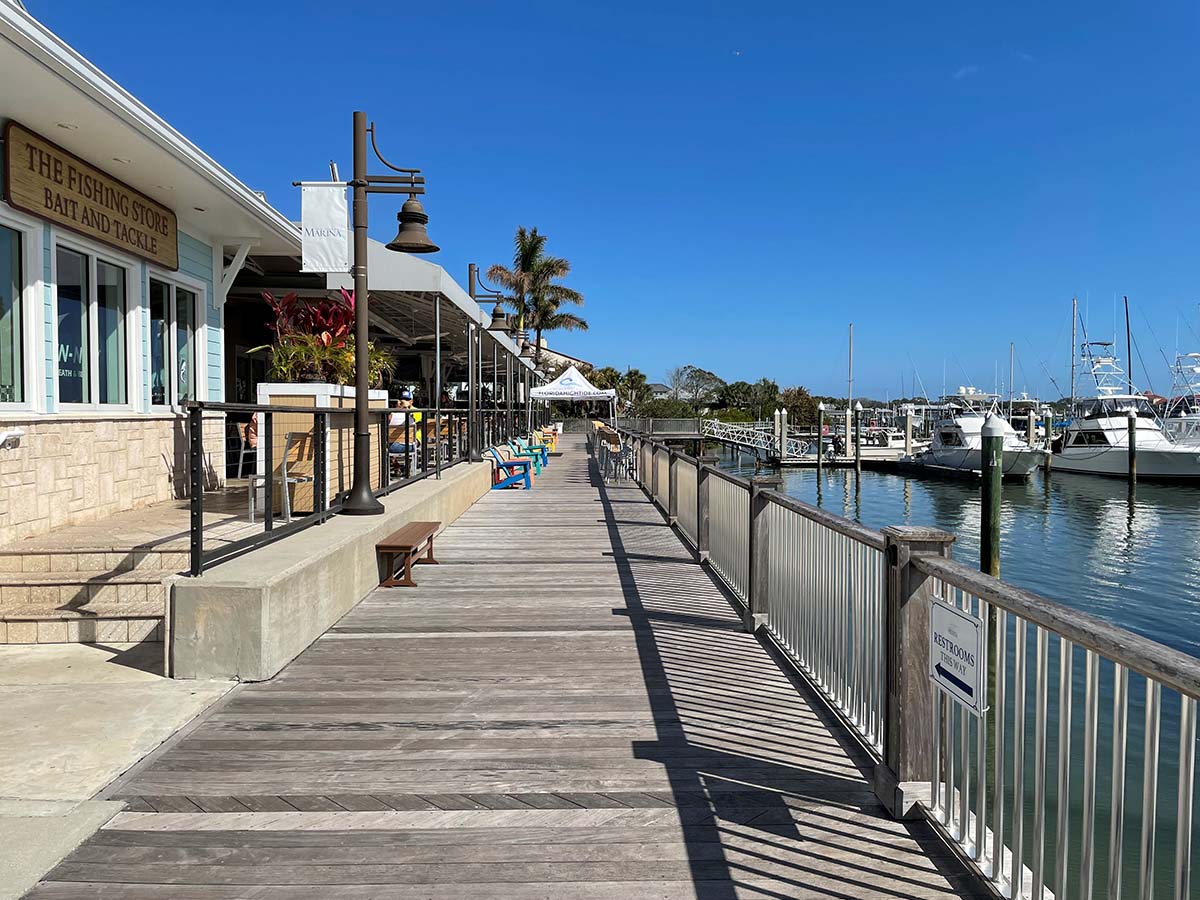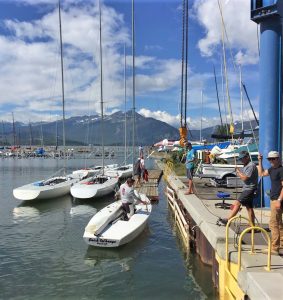
Layouts, Lockdowns & Leading-Edge Tech
Published on March 28, 2023Marinas are lively places — bustling epicenters of recreation, relaxation, and adventure. Imagine viewing a popular marina via time-lapse video over the course of just one day. You’d see a steady stream of transient dock users as they come and go; slip owners venturing out or settling in for dinner or restocking provisions, tourists and guests casually strolling the grounds, and ship’s stores and fueling stations busily ringing up new sales. Around the property, a flurry of other activities within shower and laundry facilities, picnic areas, learn-to-sail clubs, watercraft rental counters, fish cleaning stations, and more. Not to mention the busy schedules of service personnel whose maintenance yards hum with machinery, forklifts, cleaning equipment, and cranes. While mesmerizing to behold, all of this overlapping motion can be hazardous — a safety and security concern for humans and boats alike, if not properly organized. It comes down to site layout and the separation of front-of-house and back-of-house operations — paired with the right security tools to manage access.
Separating “Fun” from “Function”
Front-of-house operations can be bucketed into the “fun” category. These are the places staff interacts with members, guests, or the general public — or areas of the property that remain open and accessible to most visitors. Think restaurants, bars, picnic or grilling areas, pools, ship’s stores, rental counters for personal watercraft, paddleboards, kayaks, etc., shower/restroom/laundry facilities or programming areas from which to facilitate things like events, learn-to-sail programs or membership gatherings.
These “fun” areas should be located in the same general vicinity, whenever possible, and kept clearly separate from any “functional” zones where people could cross paths with large machinery or chemicals. Locating front-of-house operations closest to public parking is a wise starting point. From there, safety and security can quite easily be enforced by installing a locked fence, gate, or explicit wayfinding signage that funnels pedestrians away from work zones.
“Functional” areas — all back-of-house operations — are the places utilized by staff, third-party vendors, or professionals to manage and maintain the marina property and its assets. For example, boat dry stack and storage areas, parts and service yards, machinery buildings, boat cleaning and detailing facilities, marine Travelifts or boat hoists, cranes, fuel or chemical storage areas, and places where maintenance vehicles are stored. All of these areas should be off limits to non-staff individuals and entirely gated or fenced off so as to avoid accidents. Unfortunately, it is not uncommon to have “fun” and “functional” areas intermixed, where visitors must pass through a work zone in order to get to front-of-house amenities and services — or from the parking area to the boat docks, oftentimes accompanied by armfuls of bags, large coolers, and family and friends of all ages who are just excited to get on the water and likely not paying attention to staff operating forklifts and heavy equipment nearby. A recipe for disaster, not to mention potential lawsuits.

Simple to Savvy Security
Separating front-of-house from back-of-house operations is also one of the easiest ways to boost security. Isolating potentially hazardous areas by a fence or gate is a simple way to lock down different marina zones to be access-controlled. These can be operated by a traditional lock and key or digital keycard, although both of these options are relatively easy to duplicate or lose.
Assigning approved individuals a personal access code is a relatively secure method, provided they keep the code to themselves. More modern options include distributing RFID (Radio-frequency identification) cards, which use electromagnetic fields to identify and admit those carrying and scanning the card, or facial recognition software — similar to what is being used on smartphones or at many airports.
Security is important at other places within a marina as well, with opportunities to privatize access at the tops of gangways and on-site amenities available only to marina members and approved guests such as restroom and shower buildings, laundry facilities, and such.
These simple solutions are already in play at most marina facilities, and generally speaking, do a great job deterring crime or vandalism. Marinas with a little extra room in their budgets, however, can readily up the ante when it comes to smart, digital security. The foundation upon which to build these systems is a secure, data network complete with consistent Wi-Fi coverage. With that in place, marina operators and boat owners alike have access to a wide variety of new technology at their fingertips.
Lighting and sensors: Begin by installing appropriate full cut-off, dark sky friendly lights and Wi-Fi enabled controls around and within the entirety of the property. LED (Light-Emitting Diodes) lighting can improve the quality and level of lighting, improving marina users’ sense of safety and security, deterring potential criminal activity, and aiding in illuminating any video surveillance camera footage on site. The way LED fixtures are designed, the lighting itself is very controlled, directed precisely where it is needed. Environmentally, LED lights are known for conserving energy use and reducing utility cost. The energy efficiency of LED can also be extended through the use of motion sensors, instantly turning on when triggered. Wi-Fi enabled controls can adjust the brightness level or dim to minimize light pollution.
Video surveillance: Security cameras are a good next line of defense for marina management. The most common and reliable security cameras are wired. Current camera system technology is IP — internet protocol — which means cameras are network-based and viewable from any computer or device which has the IP address and security credentials, assuming the system is connected to the internet. This allows the cameras’ live or recorded footage to be viewed from any remote location or device, like within the marina office or owner’s home. If budget numbers are tight, marinas might consider installing security cameras in prominently visible locations (as a deterrent) only or in areas of highest concern and value to save on costs.
Management software and applications: While safeguarding the built environment of a marina is critical, marina management software can digitally improve the functionality of a marina by taking the hustle and bustle of marina activity and organizing it online. This reduces property congestion — thereby improving property safety. A few examples of this type of software include Molo, MarinaOffice, DockMaster, Dockwa, and Marina Master — but there are at least 30 different options on today’s market. Many of these help marinas with space management, whether in slips, racks, or dry storage facilities. They can also assist with organizing reservations and schedules as well as contracts and payments. Some offer service management tools, which can help maintenance crews manage appointments for things such as repairs, cleanings, painting services, or storage preparations — and schedule the appropriate staff and travel lifts or equipment needed. Some platforms also offer mobile apps, which give marina operators the option to review and manage things like staff workflow, reservations, and fuel sales while on the go.
All of this leads to a reduction in marina foot traffic. And, the extra level of organization for service crews creates a more predictable cadence for moving large equipment or boats, thereby decreasing any risky overlap between the ‘fun’ and ‘function’ of marina life.
The Liveliness Liability
So, while we all want our marinas to remain vibrant, “happening” places — there are ways to be smart about the visitor experience and creating spaces that support safe, secure use. It can be as simple or as advanced as a marina chooses, with options across a broad range of costs and functions. But one thing is certain: boats are only increasing in value, and boat owners are increasingly interested in seeing their assets protected. A successful marina will invest in the right measures to do just that and will be rewarded with returning owners as well as a priceless marina reputation.
Dan Williams, PLA, ASLA, AHLP is senior landscape architect at MSA. He can be reached at dwilliams@msa-ps.com. Laura Gilbert, PE is senior electrical project engineer at MSA. She can be reached at lgilbert@msa-ps.com.
| Categories | |
| Tags |






